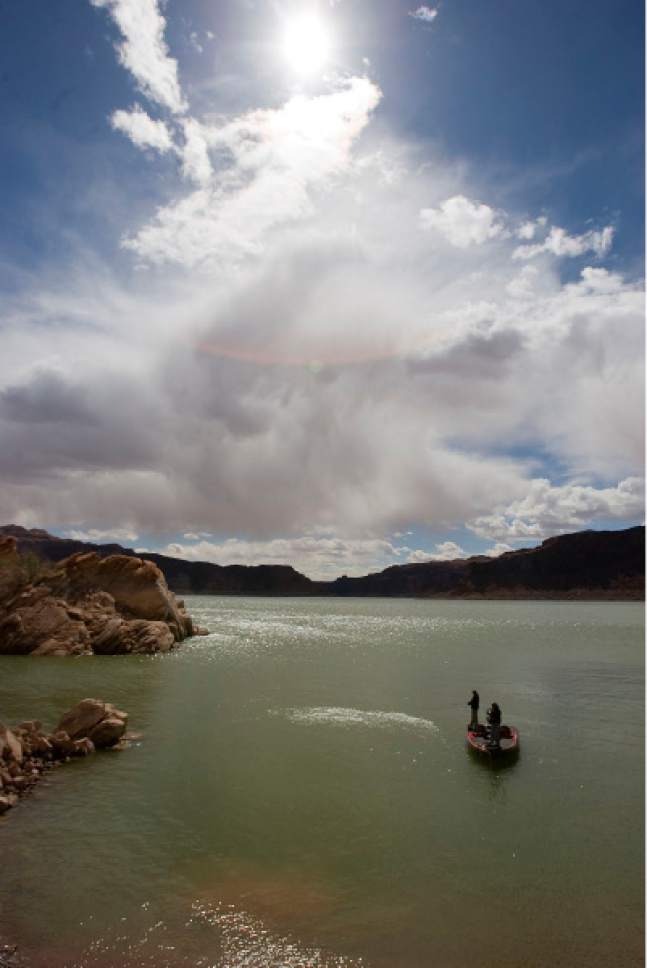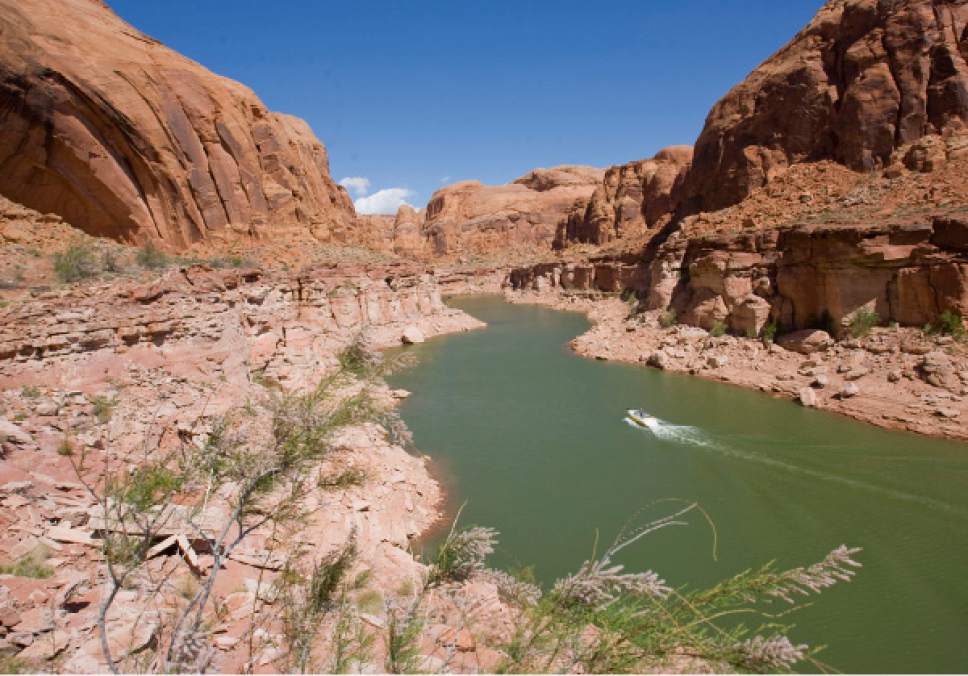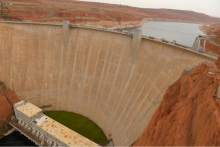This is an archived article that was published on sltrib.com in 2017, and information in the article may be outdated. It is provided only for personal research purposes and may not be reprinted.
Utah and surrounding states have a responsibility to address the pressure put on the human water supply by climate change and population growth, some scientists argued at a two-day symposium hosted this week by the University of Utah.
As drought dries large bodies of water throughout the Southwest, such as Lake Powell and Lake Mead, communities turn to groundwater, said Sasha Richey, a fellow at Washington State University. That won't necessarily be viable in the future, Richey said Thursday, because as precipitation gets more "intense with projected changes in climate" — referring to heavier storms — raindrops slough off the surface as the ground becomes saturated, rather than entering groundwater systems.
Groundwater is poorly understood because it is difficult to measure, according to Richey.
A satellite NASA launched called GRACE (Gravity Recovery and Climate Experiment) observes gravitational pulls from the earth, and logs the changes from month to month. The changes GRACE records reflect growing and shrinking in the earth's total freshwater water storage, and scientists use the changes to glean measurements of snowpack, groundwater and soil moisture, said Richey.
Underground measuring is harder. The United States Geological Survey monitors wells to measure aquifers — which contain and transmit groundwater — but there are data gaps, said Richey.
Worldwide, there aren't estimates for about a third of all aquifers, she said.
"We're depleting this resource without knowing how much is there in the first place or when we might run out," said Richey.
But John Fleck, who worked as a journalist in Albuquerque before turning to academia, says the narrative that the region is running out of water is a myth. Now a professor at the University of New Mexico, Fleck studies solutions to water problems in the Colorado River Basin, and says bankrupting the water supply isn't one of the concerns.
Water use hasn't increased with the population, said Fleck, citing data collected by the USGS and the U.S. Bureau of Economic Analysis that shows water use tapered off in the 1980s.
"The progress that we've made and the lessons that we've learned are critically important and we have to understand that story of success, rather than remaining steeped in the tragedy narrative," said Fleck, crediting improved plumbing and efficient appliances for helping curb water use.
When people bump up against the edge of the water supply, "they start changing their behaviors and adaption kicks in," said Fleck.
However, Jonathan Overpeck, a professor at the University of Arizona, said the drought is not over. This drought is marked not by a decline in precipitation, but by unusual warmth, he said.
"It's temperature that's going to be inexorably drying us out," said Overpeck.
As temperatures rise, the atmosphere demands more moisture. In the Colorado River Basin, scientists are observing sublimation of snow, plants, soil and surface moisture returning water vapor to the atmosphere, he said. Scientists have observed a longer growing season, which means plants suck more water from the ground and, by evapotranspiration, send it into the atmosphere.
The Southwest could be the go-to region for water and energy solutions and could become a major renewable energy exporter, said Overpeck, but it would require cooperation from the seven states connected by the Colorado River Basin: Utah, California, Arizona, New Mexico, Colorado, Wyoming and Nevada.
"We're not seven silos," said Pat Mulroy, a Senior Fellow at the Brookings Institute. "We're glued at the hip."







